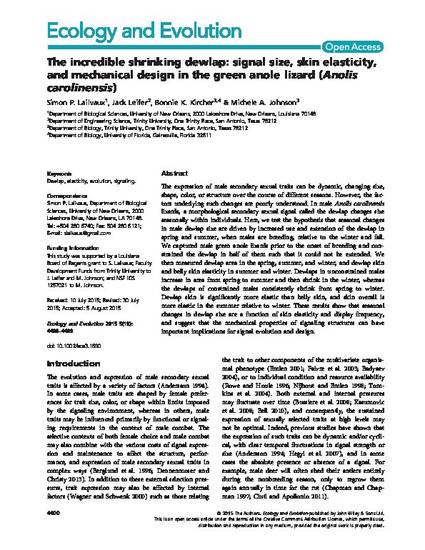
- Biology and
- Life Sciences
The expression of male secondary sexual traits can be dynamic, changing size, shape, color, or structure over the course of different seasons. However, the factors underlying such changes are poorly understood. In male Anolis carolinensis lizards, a morphological secondary sexual signal called the dewlap changes size seasonally within individuals. Here, we test the hypothesis that seasonal changes in male dewlap size are driven by increased use and extension of the dewlap in spring and summer, when males are breeding, relative to the winter and fall. We captured male green anole lizards prior to the onset of breeding and constrained the dewlap in half of them such that it could not be extended. We then measured dewlap area in the spring, summer, and winter, and dewlap skin and belly skin elasticity in summer and winter. Dewlaps in unconstrained males increase in area from spring to summer and then shrink in the winter, whereas the dewlaps of constrained males consistently shrink from spring to winter. Dewlap skin is significantly more elastic than belly skin, and skin overall is more elastic in the summer relative to winter. These results show that seasonal changes in dewlap size are a function of skin elasticity and display frequency, and suggest that the mechanical properties of signaling structures can have important implications for signal evolution and design.
